
Louis Joseph Andriessen was a Dutch composer, pianist and academic teacher. Considered the most influential Dutch composer of his generation, he was a central proponent of The Hague school of composition. Although his music was initially dominated by neoclassicism and serialism, his style gradually shifted to a synthesis of American minimalism, jazz and the manner of Stravinsky.
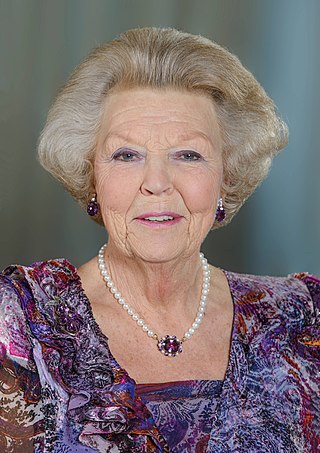
Beatrix is a member of the Dutch royal house who reigned as Queen of the Netherlands from 1980 until her abdication in 2013.

Malcolm Benjamin Graham Christopher Williamson, was an Australian composer. He was the Master of the Queen's Music from 1975 until his death. According to Grove Music Online, although Williamson's earlier compositions aligned with Serialist techniques, "he later modified his approach to composition in the search of a more inclusive musical language that was fundamentally tonal and, above all, lyrical. In the 1960s he was commonly referred to as the most often commissioned composer in Britain, and over his lifetime he produced more than 250 works in a wide variety of genres."
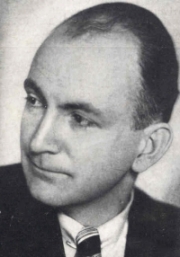
Henk Badings was an Indonesian-Dutch composer.
John Arthur Lanchbery OBE was an English-Australian composer and conductor, famous for his ballet arrangements. He served as the Principal Conductor of the Royal Ballet from 1959 to 1972, Principal Conductor of the Australian Ballet from 1972 to 1977, and Musical Director of the American Ballet Theatre from 1978 to 1980. He continued to conduct regularly for the Royal Ballet until 2001.
Gordon Percival Septimus Jacob CBE was an English composer and teacher. He was a professor at the Royal College of Music in London from 1924 until his retirement in 1966, and published four books and many articles about music. As a composer he was prolific: the list of his works totals more than 700, mostly compositions of his own, but a substantial minority of orchestrations and arrangements of other composers' works. Those whose music he orchestrated range from William Byrd to Edward Elgar to Noël Coward.

Matthijs Vermeulen, was a Dutch composer and music journalist.

Hendrik Franciscus Andriessen was a Dutch composer and organist. He is remembered most of all for his improvisation at the organ and for the renewal of Catholic liturgical music in the Netherlands. Andriessen composed in a musical idiom that revealed strong French influences. He was the brother of pianist and composer Willem Andriessen and the father of the composers Jurriaan Andriessen and Louis Andriessen and of the flautist Heleen Andriessen.
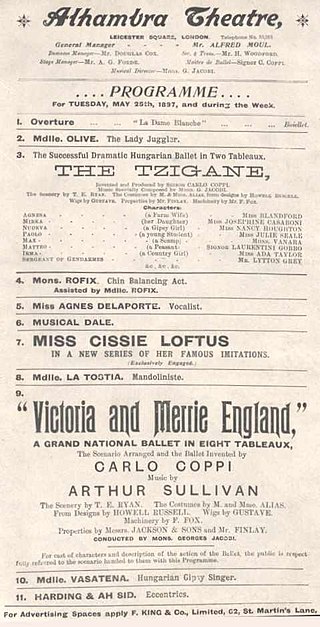
Victoria and Merrie England, billed as a "Grand National Ballet in Eight Tableaux" is an 1897 ballet by the choreographer Carlo Coppi with music by Arthur Sullivan, written to commemorate the Diamond Jubilee of Queen Victoria, commemorating her sixty years on the throne. The ballet became very popular and ran for nearly six months.
Graeme John Koehne, is an Australian composer and music educator. He is best known for his orchestral and ballet scores, which are characterised by direct communicative style and embrace of tertian harmony. His orchestral trilogy Unchained Melody, Powerhouse, and Elevator Music makes allusions to Hollywood film score traditions, cartoon music, popular Latin music and other dance forms.
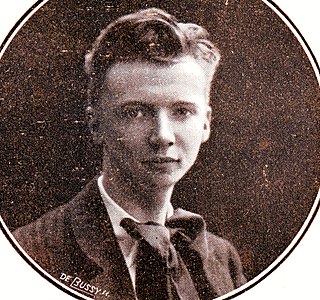
Willem Andriessen was a Dutch pianist and composer. His compositional output was small due to the demands of performance and teaching, but he was nonetheless awarded a number of compositional prizes in Belgium and the Netherlands.

Robert Watson Hughes AO MBE was a Scottish-born Australian composer. His melodies are driven by short motives and unrelenting ostinato figures.
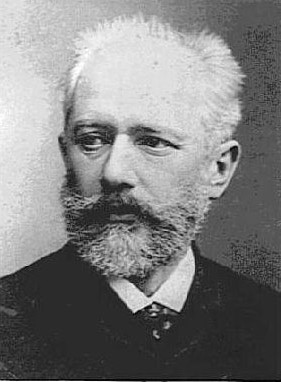
While the contributions of the Russian nationalistic group The Five were important in their own right in developing an independent Russian voice and consciousness in classical music, the compositions of Pyotr Ilyich Tchaikovsky became dominant in 19th century Russia, with Tchaikovsky becoming known both in and outside Russia as its greatest musical talent. His formal conservatory training allowed him to write works with Western-oriented attitudes and techniques, showcasing a wide range and breadth of technique from a poised "Classical" form simulating 18th century Rococo elegance to a style more characteristic of Russian nationalists or a musical idiom expressly to channel his own overwrought emotions.
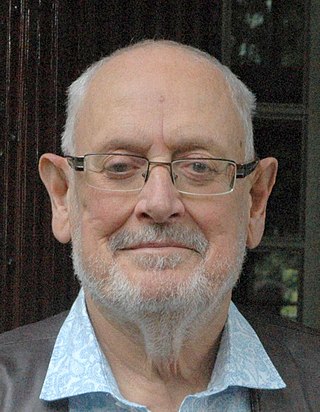
Rob du Bois was a Dutch composer, pianist, and jurist.
Herschel Garfein is an American composer, librettist, stage director, and faculty member of the Steinhardt School of Music at New York University, where he teaches Script Analysis. Garfein is widely known for his libretto written for Robert Aldridge's Elmer Gantry, which won two 2012 Grammy Awards including "Best Contemporary Classical Composition" won by Garfein and Aldridge. He also collaborated with Aldridge on the oratorio Parables. In his compositions for the musical Suenos he found an inspiration in Hispanic rhythms. Garfein also composed the music and libretto for an opera based on the Tom Stoppard play Rosencrantz and Guildenstern are Dead.
Elena Petrová, née Krupková was a Czech composer. She was born in Modrý Kameň, and studied piano with Karel Hoffmeister and composition with Jan Kapr and Miloslav Istvan at the Janáček Academy of Music. After completing her studies, she taught music theory at the Charles University in Prague.
Marc Wilkinson was an Australian-British composer and conductor best known for his film scores, including The Blood on Satan's Claw, and incidental music for the theatre, most notably for Peter Shaffer's The Royal Hunt of the Sun. His compositional approach has combined traditional techniques with elements of the avant-garde. After residing for most of his life in the United Kingdom, he retired from composition and lived in France.
Opera in Dutch is a minor tradition in the opera history of the Netherlands. Since the earliest operas were staged in the Netherlands in the 17th century, the preference has always been for original Italian, French and German versions, or occasionally French translations of Italian and German works.
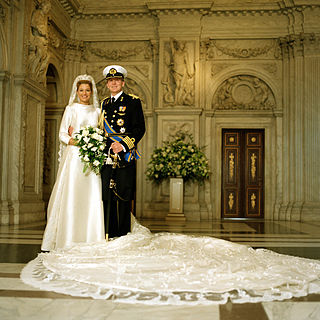
The wedding of Willem-Alexander, Prince of Orange, and Máxima Zorreguieta Cerruti took place on 2 February 2002 at the Nieuwe Kerk, Amsterdam. Willem-Alexander and Máxima became king and queen on 30 April 2013 after the abdication of his mother, Beatrix.

The wedding of Princess Beatrix of the Netherlands and Claus van Amsberg took place on Thursday, 10 March 1966, in Amsterdam, Netherlands. They were married first in a civil ceremony at the Prinsenhof, after which the marriage was religiously blessed in the Westerkerk. The bride was the eldest daughter of Queen Juliana and heir presumptive to the Dutch throne. The groom was an untitled German nobleman. The engagement of the future queen to a German caused an uproar among some Dutch people and the wedding was marred by protests.













